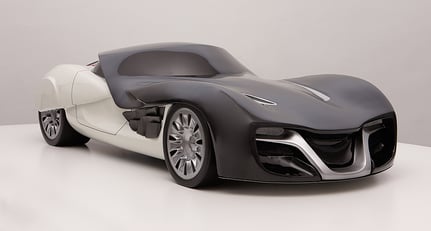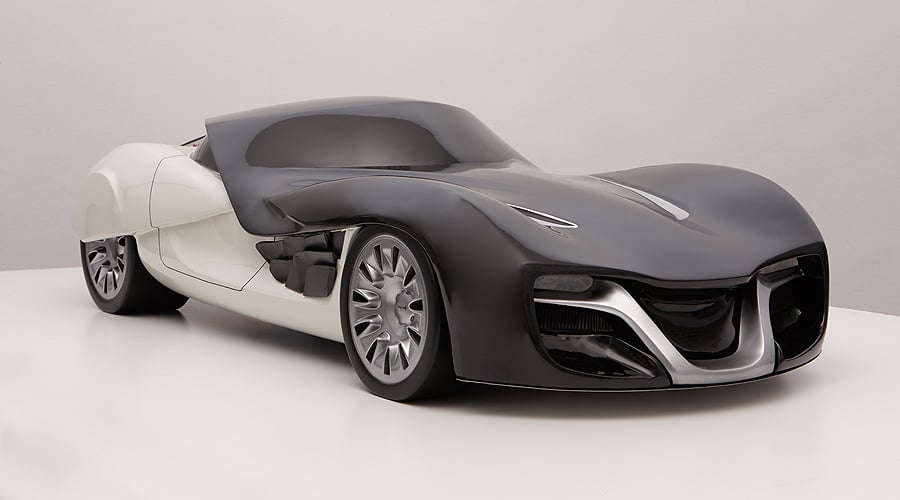
Pegaso’s foray into car production might have lasted less than a decade, but during that time the Spanish marque produced some notably elegant machines. Inspired by these, one patriotic designer has revealed exclusively to Classic Driver his vision of a contemporary Pegaso.
As a youngster, Spanish-born design graduate Hector Alvarez promised himself that one day, once he had acquired the relevant skills, he would design a successor to the small family of cars produced by Barcelona-based Pegaso in the 1950s. Having recently completed a Masters in Automotive Design, that day has now come.
Drawing inspiration mainly from the unique Touring-bodied ‘Thrill’ of 1953, Alvarez set about creating the ‘Empiria Classic Futurism Pegaso Homage’. His first step was to identify common design cues of past Pegasos – the expansive bonnets, short noses and elongated rear ends were instantly apparent, but there were other important flourishes. One example was the way the cabin usually extended well past the rear axle; another was how, on rarer examples, such as the Thrill and Berlineta Cúpula, the wheels were partially covered.
Alvarez decided on a two-tone colour theme as seen on the Thrill, but his choice went beyond a simple tribute to the car. Instead, he used the black areas to signify the relationship with the voluptuous, organic styling of the mid-century machines. Meanwhile, the white areas denote a more futuristic approach, with sharp, clinical lines similar to those of a modern supercar.
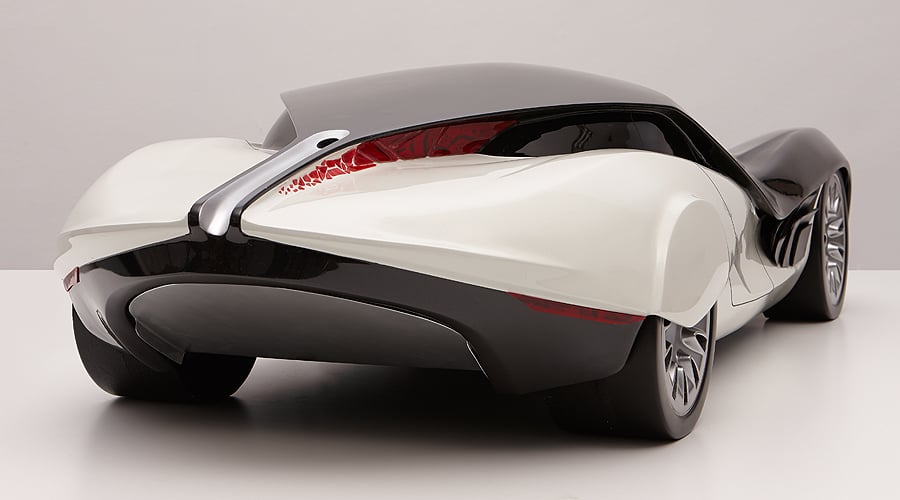
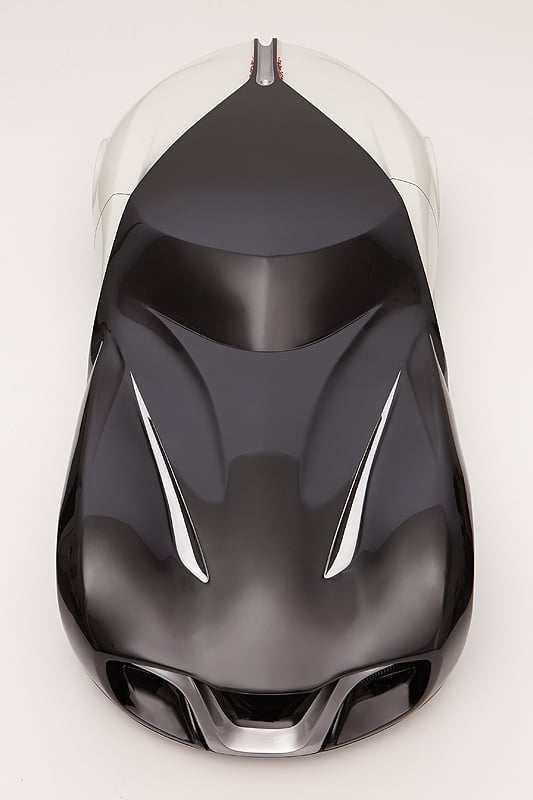
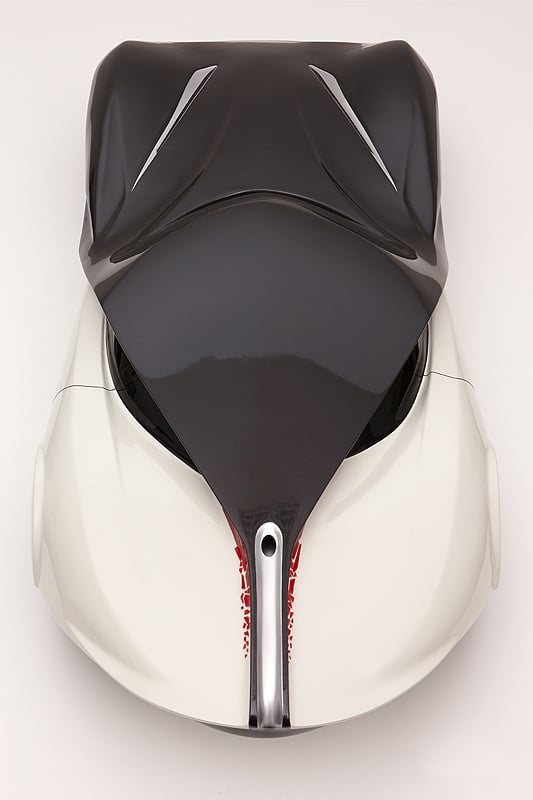
Prominent examples of this yin/yang methodology can be seen in the exaggerated front wheelarches and upright windscreen – both almost a staple of car design in the 1950s. Contrastingly, Alvarez points out that modern car design often ventures into crazy, almost anarchic territory; the rear brake lights are used to enforce this point, becoming more fragmented as they move further into the ‘futuristic’ white surface.
Interestingly, Alvarez chose to eschew modern materials such as carbonfibre (its only use being to form the car’s rear subframe) in favour of one popular in both past and present times: aluminium. The bonnet vents are fashioned from the lightweight metal, alluding to the disposition of the six-cylinder boxer engine situated beneath; the aluminium exhaust also retains the hand-made charm of the past while becoming an up-to-date modern design feature in itself, as in a modern Pagani.
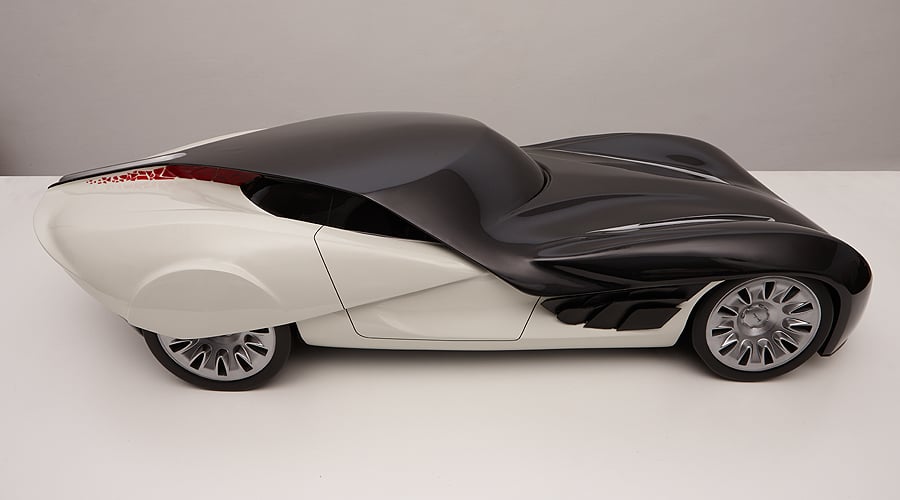
Rather than reverting to the much-used ‘retro’ approach, the Empiria Pegaso manages to contrast modern and classic design practices side-by-side while somehow maintaining a consistency from buxom bonnet to tapered tail. There are few modern cars that would sit so well on the concours lawns, where its inspirations are so often seen.
|
Related Links You can find out more about the Pegaso Homage concept by contacting Hector Alvarez |
Text: Joe Breeze
Photos: Hector Alvarez for Classic Driver
